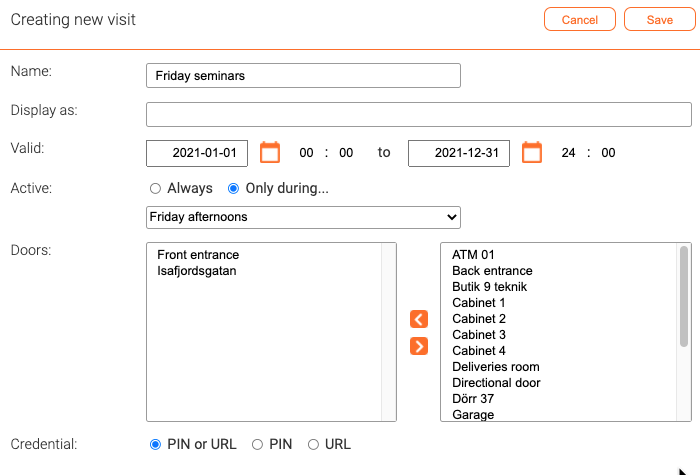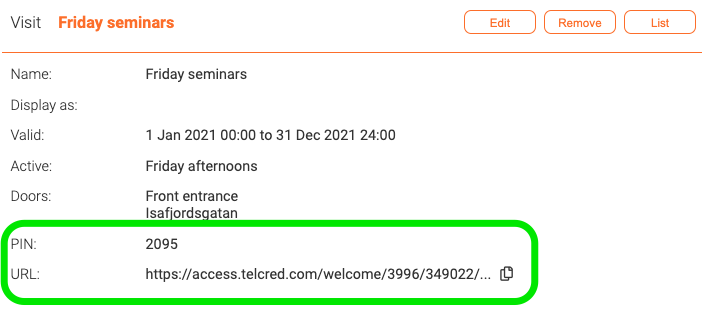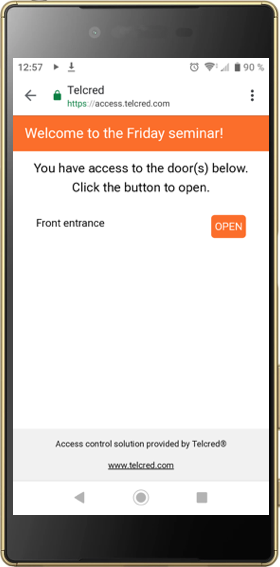Visits: Difference between revisions
Telcredstaff (talk | contribs) No edit summary |
Telcredstaff (talk | contribs) No edit summary |
||
| Line 20: | Line 20: | ||
For PIN, the door needs to have a reader with a keypad. The URL can be sent to visitors in a regular email. When the visitors click the URL, they are taken to a web page that displays the 'Display as' field at the top and an "Open" button for each door they have access to. |
For PIN, the door needs to have a reader with a keypad. The URL can be sent to visitors in a regular email. When the visitors click the URL, they are taken to a web page that displays the 'Display as' field at the top and an "Open" button for each door they have access to. |
||
[[File:Visit_webpage.png|Visit web page]] |
[[File:Visit_webpage.png|Visit web page]] |
||
Revision as of 09:38, 21 June 2018
Visits make it easy to give people access to one or more doors, for a limited time, even if they are not registered users in the system. The intended usage is to make it easy to let e.g. visitors to an event let themselves in.
A Visit is defined by its:
- Validity
- Schedule
- Door(s)
- Credential type (PIN, URL or both)
In the example above, we have created a Visit that allows people to enter through the front door from Jan 1 to Jun 30, but only on Friday afternoons.
The credential type can be PIN, URL or both. Immediately after creating the new visit, its PIN and/or URL are displayed:
For PIN, the door needs to have a reader with a keypad. The URL can be sent to visitors in a regular email. When the visitors click the URL, they are taken to a web page that displays the 'Display as' field at the top and an "Open" button for each door they have access to.


